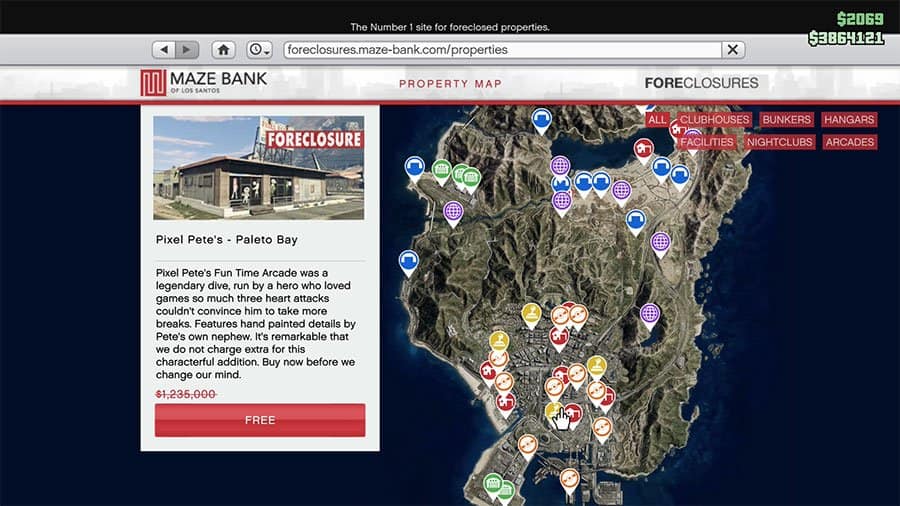Best Or Cheapest Arcade To Buy In GTA Online

The Diamond Casino Heist in GTA Online let’s you buy an Arcade, but there’s a few. This guide on the Best Or Cheapest Arcade To Buy In GTA Online tells you where you can buy each of the Arcades in the Diamond Casino Heist, how much each of the Arcades cost, and a quick overview of the location itself.
Once you start the Diamond Casino Heist you can purchase an Arcade from the Maze Bank Foreclosures section on the Internet of your mobile phone. They are essentially the same, offering a location to purchase and used brand new Arcade Machines as a front to your efforts on the Diamond Casino Heist.
NOTE: The Casino Heist mission involves a lot of back and forth from the Arcade to the Casino. If you have the money to spare, buying the ones closest to the Casino will save you a lot of time. Make sure to unlock all heist approaches.
Pixel Pete’s (CHEAPEST)
Cost: $1,235,000
Location: Paleto Bay
Nearby Locations: Garage, Barbers, 2x Clubhouse, 1x Bunker
Wonderama
Location: Grapeseed
Cost: $1,565,000
Nearby Locations: 1x Bunker, Store
Eight Bit (MOST EXPENSIVE)
Location: Vinewood
Cost: $2,530,000
Nearby Locations: Customs, Ammunation, Barbers
Insert Coin
Location: Rockford Hills
Cost: $2,345,000
Nearby Locations: Ammunation, Barbers
Videogeddon
Location: La Mesa
Cost: $1,875,000
Nearby Locations: Store
Warehouse
Location: Davis
Cost: $2,135,000
Nearby Locations: Store, Barbers
The Arcade acts much like the Penthouses and other buildings you can buy. You’re paying mostly for convenience and location. Once you click to purchase, you first get the option of customizing it with various add-ons, such as a private room, garage, each increasing in price. The options between the different Arcades are much and the same.



